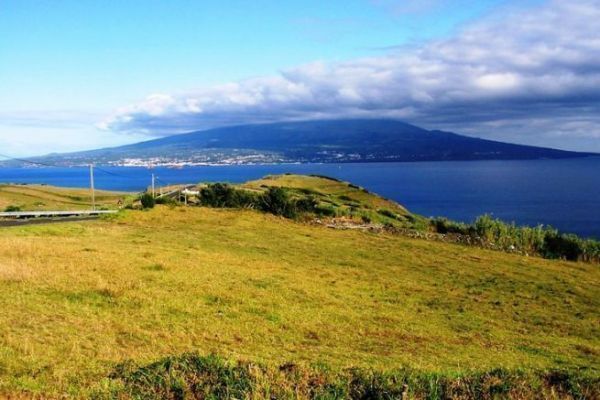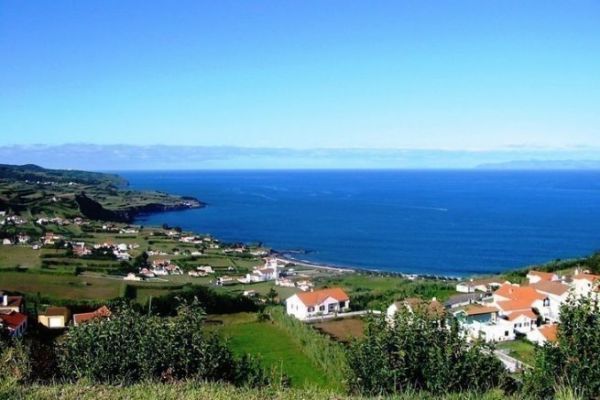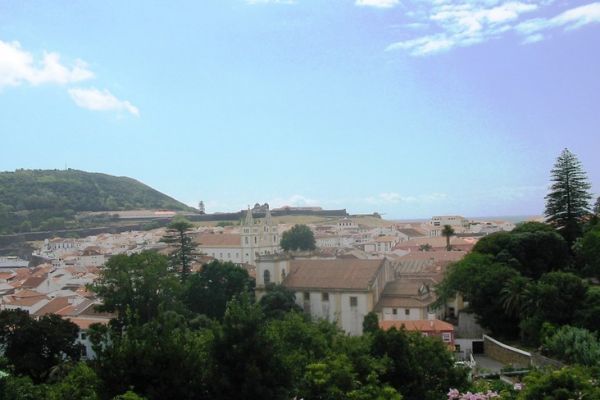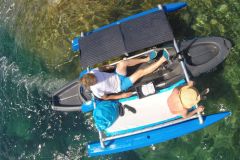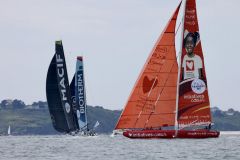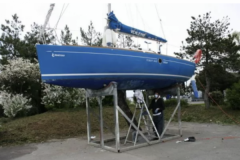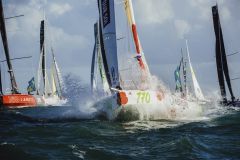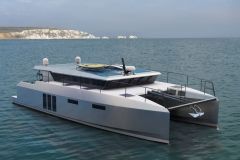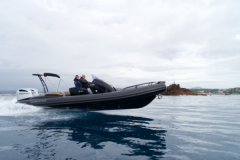Among the 9 islands of the Azores, Pico and Faïal are probably the best known to sailors, the port of Horta on the latter being a mythical stopover for many sailors crossing the Atlantic. But there is more to discover on these volcanic and green rocks.
Pico
New entry formalities are unavoidable and systematic in every island in the Azores, which is not the most festive attraction of the archipelago. Fortunately, in Pico, the welcome by the authorities was in our case very nice.
From the vine to the whale
Madalena, port city, is one of the three main cities of the island Pico. The vineyards, an important activity on the island, are cultivated on lava lands, always surrounded by low walls of dry, black and rough stones.

The contrast with the soft green of the vines and the blue of the sea is wonderfully beautiful and enchanting.
A trip on the roads of Pico offers many subjects of interest or dazzling. The village of Cachorro, built in black lava, is a Unesco World Heritage Site. Completely surrounded by vineyards, most of its houses were once wine cellars. One of them is dedicated to distillation and houses four copper stills, heated by wood fire in stone ovens.

In Ãeuros São Roque, the last whaling factory of the archipelago has become a museum. When you arrive near the towpath, the steam winches are visible, as well as a superb fifteen meter high chimney.

A stronghold of wooden shipbuilding
Santo Amaro, in the Northeast, is a Mecca of Azorean shipbuilding. The instigator was Manuel Joaquim de Mello, born in 1909. Together with his sons and his team, he built many good wooden boats in this area, 100 meters from the sea.

Measuring up to fifty meters in length, they were used for years for inter-island transport and fishing. One of his three sons, José, worked for forty years at Alden, Rhode Island, USA. Then back home, he created a small and fascinating maritime museum in memory of his father.

The ascent of Mount Pico, an excursion not to be missed
The walk to the crater and even to the top of Pico Pequeno, the highest peak in Portugal with its 2351 meters of altitude, is an attractive sporty walk. The 3 hours of ascent are rather arduous, because of the important difference in level and the sharp rocks. But, at the end, the view on the excavation, drawing a circle of 700 meters of perimeter, is impressive. At the top, the fumaroles and the smell of sulfur remind the visitor that the volcano is not quite asleep. Then, after a time of rest, the descent turns out to be a little fasterâeuros¦ but guère easier.

Faial and Horta: the essential stopover
In the port of Horta, the quays of the dike are covered with the paintings made by the crews during their stopover. This harbor has a worldwide reputation. The very famous Peter Café Sport is no stranger to this. The long history of this bar begins with the 20th century under the name of "Azorean House", which soon became "Café des Sports".

A passing English captain identified some similarities between José Azevedo, the owner's son, and his own son Peter, who was left behind. It was this meeting that gave rise to the current name of great notoriety. José began to work very early. He helped his father to choose the many objects made of cetacean bones that make up the Scrimshaw Museum. These images engraved on whale teeth are of remarkable precision and beauty.

Another volcano to discover
A tour of the island by car allows to discover the Capelinhos volcano. An eruption started in September 1957, whose activity lasted 13 months. In addition to its geographical consequences and the enlargement of the island by 2.4 km², it created panic and desolation in the nearby population.

One of the major economic repercussions was the possibility for the inhabitants to emigrate to the United States, Canada and Mozambique. This was done en masse, in search of a better life, creating a true Azorean diaspora.
